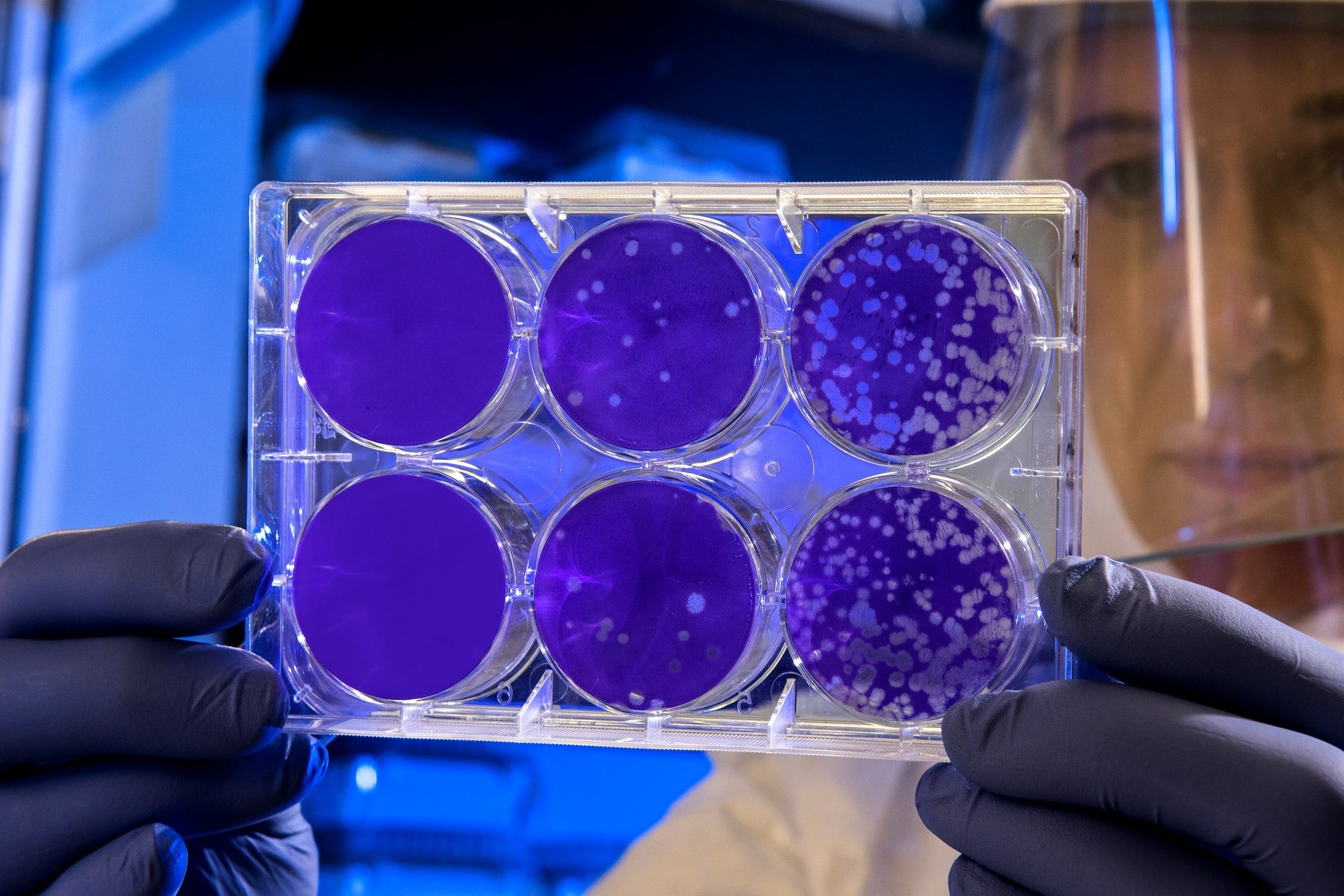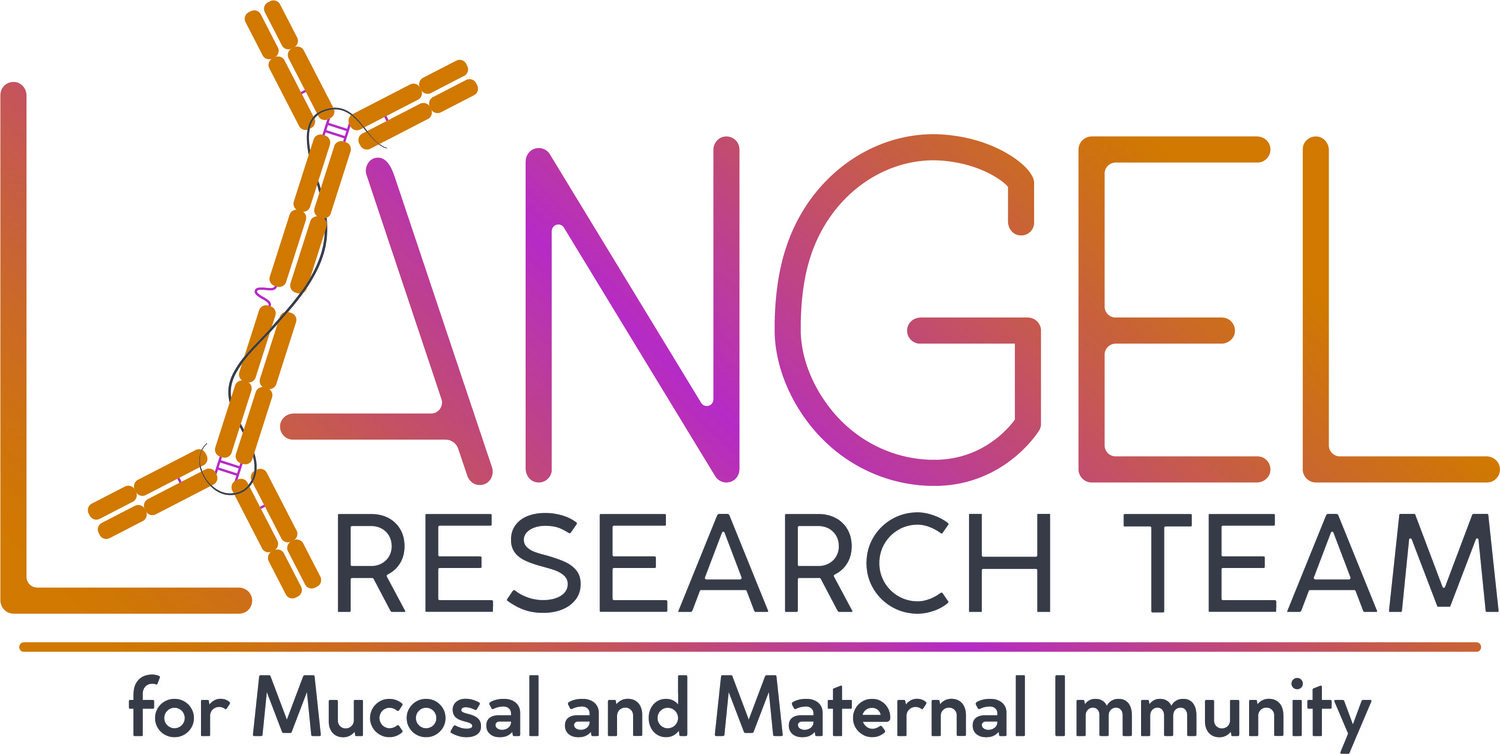
We are a team of scientists working to better understand immunity at our mucosal surfaces.
The Langel Research Team is located in the Center for Global Health and Diseases and Department of Pathology at Case Western Reserve University School of Medicine in Cleveland, Ohio.
Human-milk transfer of maternal immunity from Langel et al., Cell Host & Microbe 2022. Immunomodulatory breast-milk components including secretory IgA and IgG passively transfer into milk to protect and regulate the infant intestinal tract.
The Langel Research Team uses multi-disciplinary approaches to study mucosal immune responses against viral infections.
We study mucosal immune responses that relate to women’s health, with a particular emphasis on how antibodies function at barrier surfaces. Specifically, we investigate antibody transfer from mothers to infants, focusing on the unique protection conferred through breast milk. We also examine how antibodies interact with bacteria in the female reproductive tract, as these interactions play a key role in maintaining health and preventing disease.
Across all of this work, we are especially interested in IgA, how it functions in the body and at mucosal surfaces, and how antibody-producing plasma cells regulate these processes. By studying these mechanisms, our goal is to define correlates of mucosal immune protection against viral diseases.
Langel Research Team News
10/2025
Big congratulations to first author Pari Baker and co-author Lauren Stewart Stafford for publication of a review paper in The Journal of Immunology: Advancing protective effects of maternal antibodies in neonates through animal models
Pari Baker’s images of bovine and porcine mammary glands made the cover this month’s Journal of Immunology
9/2025
Congratulations to Yong Guang Jiang for being selected for the Rottman Family Fund to study how antibody-binding influences the growth, stability, and functional activity of L. crispatus in vaginal microbiome.
5/2025
Congratulations to lead author Pari Baker and collaborating team for pre-print publication: Pregnant Dairy Heifers Express Influenza A Virus Receptors in the Mammary Gland
4/2025
Co-authors Dr. Stephanie Langel and Dr. Elisa Crisci collaborated for a recent publication: Case Report: The effect of asplenia on the response to influenza vaccination and passive transfer of immunity in an adult female pig
3/2025
Co-authors Dr. Stephanie Langel and Dr. Elisa Crisci collaborated for a recent publication: High-throughput 96-well plate-based porcine antibody isolation protocol
2/2025
Congratulations to Dr. Stephanie Langel on her recent publication: mSphere of Influence: The maternal gut-mammary axis and its role in shaping neonatal health
1/2025
Pari Baker presented: Investigating the effects of intramammary inoculation of bovine-origin H5N1 influenza in lactating ferrets at the 2025 Conference of Research Workers in Animal Diseases
1/2025
Congratulations to Dr. Stephanie Langel on her recent publication: Breast milk delivery of an engineered dimeric IgA protects neonates against rotavirus
1/2025
Congratulations to post-doc Lauren Stewart Stafford on her recent publication: A peptide mimic of SOCS1 modulates equine peripheral immune cells in vitro and ocular effector functions in vivo: implications for recurrent uveitis
11/2024
Congratulations to lead authors Pari Baker and Michelle Moyer as well as the Langel Research Team for preprint publication of: Intramammary infection of bovine H5N1 influenza virus in ferrets leads to transmission and mortality in suckling neonates




